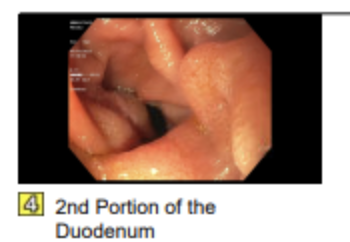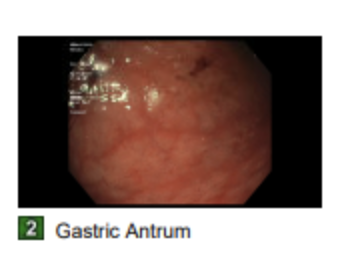Tuesday Poster Session
Category: General Endoscopy
P5160 - Eosinophilic Gastroenteritis With Ascites: A Rare Case Presentation and Review of Literature
Tuesday, October 28, 2025
10:30 AM - 4:00 PM PDT
Location: Exhibit Hall

Emmanuel Snr Amoateng, MD (he/him/his)
Northern Westchester Hospital
Yonkers, NY
Presenting Author(s)
Emmanuel Snr Amoateng, MD1, Nimkar Abhishek, MD1, Victoria Gilrane, MD1, Kwame Adjei-Sefah, MD, MPH2
1Northern Westchester Hospital, Mount Kisco, NY; 2University of North Carolina at Chapel Hill, Chapel Hill, NC
Introduction: Eosinophilic gastroenteritis (EGE) is a rare disease marked by eosinophilic infiltration of the bowel wall, gastrointestinal symptoms, and exclusion of other causes of eosinophilia¹. Eosinophilic ascites (EA) is a rare presentation caused by edema and inflammation of the small bowel wall’s serosal layer². We present a case of a 42-year-old male with abdominal pain and ascites found to have EA.
Case Description/
Methods: A 42-year-old man with asthma and atopy, recently returned from Guatemala, presented with generalized abdominal pain and distention for 2 weeks. History was otherwise negative. Labs showed leukocytosis (11,490/mm³) with 21% eosinophils and elevated ALT (46 U/ml). CT abdomen revealed gastritis, duodenitis, esophagitis, and large-volume ascites. Paracentesis showed 5,500 white cells with 92% eosinophils. Workup for eosinophilia, including Strongyloides, Churg-Strauss, Toxocara, TB, vasculitis, and HIV, was unremarkable³. Endoscopy revealed diffuse gastritis with normal biopsies. Although biopsy confirmation is standard, a full-thickness biopsy was deferred due to risk⁴. The patient was treated with prednisone, with symptom resolution over 6 weeks.
Discussion: EGE is a rare, benign disorder of unknown cause marked by eosinophilic infiltration of the GI tract⁵. About half of patients have allergy or atopy; some have IgE specific for food allergens⁵. A defective barrier may allow allergens to activate eosinophils via IgA, IgG, or IgE and mast cell degranulation, leading to eosinophil recruitment⁶. Parasitic infections (Strongyloides, Schistosomiasis, Toxocara) must be ruled out³. Autoimmune diseases like eosinophilic granulomatosis with polyangiitis, lymphoma, and hypereosinophilic syndrome can present similarly¹. EGE is a diagnosis of exclusion⁶. Prednisone is the mainstay of therapy⁵. EGE should be suspected in patients with unexplained ascites, with ascitic fluid eosinophilia and response to steroids indirectly confirming the diagnosis².

Figure: the second portion of the duodenum

Figure: Gastric antrum
Disclosures:
Emmanuel Snr Amoateng indicated no relevant financial relationships.
Nimkar Abhishek indicated no relevant financial relationships.
Victoria Gilrane indicated no relevant financial relationships.
Kwame Adjei-Sefah indicated no relevant financial relationships.
Emmanuel Snr Amoateng, MD1, Nimkar Abhishek, MD1, Victoria Gilrane, MD1, Kwame Adjei-Sefah, MD, MPH2. P5160 - Eosinophilic Gastroenteritis With Ascites: A Rare Case Presentation and Review of Literature, ACG 2025 Annual Scientific Meeting Abstracts. Phoenix, AZ: American College of Gastroenterology.
1Northern Westchester Hospital, Mount Kisco, NY; 2University of North Carolina at Chapel Hill, Chapel Hill, NC
Introduction: Eosinophilic gastroenteritis (EGE) is a rare disease marked by eosinophilic infiltration of the bowel wall, gastrointestinal symptoms, and exclusion of other causes of eosinophilia¹. Eosinophilic ascites (EA) is a rare presentation caused by edema and inflammation of the small bowel wall’s serosal layer². We present a case of a 42-year-old male with abdominal pain and ascites found to have EA.
Case Description/
Methods: A 42-year-old man with asthma and atopy, recently returned from Guatemala, presented with generalized abdominal pain and distention for 2 weeks. History was otherwise negative. Labs showed leukocytosis (11,490/mm³) with 21% eosinophils and elevated ALT (46 U/ml). CT abdomen revealed gastritis, duodenitis, esophagitis, and large-volume ascites. Paracentesis showed 5,500 white cells with 92% eosinophils. Workup for eosinophilia, including Strongyloides, Churg-Strauss, Toxocara, TB, vasculitis, and HIV, was unremarkable³. Endoscopy revealed diffuse gastritis with normal biopsies. Although biopsy confirmation is standard, a full-thickness biopsy was deferred due to risk⁴. The patient was treated with prednisone, with symptom resolution over 6 weeks.
Discussion: EGE is a rare, benign disorder of unknown cause marked by eosinophilic infiltration of the GI tract⁵. About half of patients have allergy or atopy; some have IgE specific for food allergens⁵. A defective barrier may allow allergens to activate eosinophils via IgA, IgG, or IgE and mast cell degranulation, leading to eosinophil recruitment⁶. Parasitic infections (Strongyloides, Schistosomiasis, Toxocara) must be ruled out³. Autoimmune diseases like eosinophilic granulomatosis with polyangiitis, lymphoma, and hypereosinophilic syndrome can present similarly¹. EGE is a diagnosis of exclusion⁶. Prednisone is the mainstay of therapy⁵. EGE should be suspected in patients with unexplained ascites, with ascitic fluid eosinophilia and response to steroids indirectly confirming the diagnosis².

Figure: the second portion of the duodenum

Figure: Gastric antrum
Disclosures:
Emmanuel Snr Amoateng indicated no relevant financial relationships.
Nimkar Abhishek indicated no relevant financial relationships.
Victoria Gilrane indicated no relevant financial relationships.
Kwame Adjei-Sefah indicated no relevant financial relationships.
Emmanuel Snr Amoateng, MD1, Nimkar Abhishek, MD1, Victoria Gilrane, MD1, Kwame Adjei-Sefah, MD, MPH2. P5160 - Eosinophilic Gastroenteritis With Ascites: A Rare Case Presentation and Review of Literature, ACG 2025 Annual Scientific Meeting Abstracts. Phoenix, AZ: American College of Gastroenterology.
